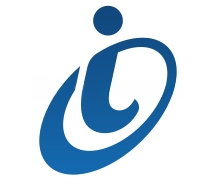
starting a journey to acquire tech skills can be both exciting and hard, especially for beginners, we’ll explore the 11 easiest tech skills to learn, providing insights into the learning curve, where you can acquire these skills, and the associated costs.
Whether you’re a tech enthusiast or someone looking to pivot into the tech industry, these skills offer a fantastic starting point.
The 11 Easiest Tech Skills to Learn for Beginners
- HTML and CSS: The Building Blocks of Web DevelopmentLearning HTML (HyperText Markup Language) and CSS (Cascading Style Sheets) is the foundational step for anyone interested in web development. HTML defines the structure of a webpage, while CSS controls its visual presentation.
- Learning Curve: HTML and CSS are relatively straightforward and can be learned by beginners with minimal coding experience.
- Where to Learn: Codecademy, W3Schools, freeCodeCamp.
- Cost: Free to $300 for comprehensive courses.
- Python: A Versatile and Beginner-Friendly LanguagePython is renowned for its readability and simplicity, making it an excellent language for beginners. It is widely used in various fields, from web development to data science and automation.
- Learning Curve: Python is considered one of the easiest programming languages to learn, thanks to its clean syntax.
- Where to Learn: Codecademy, Coursera, edX, SoloLearn.
- Cost: Free to $500 for comprehensive courses.
- Basic Data Analysis with Excel: Crunching Numbers Made EasyMicrosoft Excel is a powerful tool for data analysis and visualization. Learning basic functions, formulas, and data manipulation can open doors to various roles.
- Learning Curve: Excel basics can be grasped quickly, and more advanced features can be learned progressively.
- Where to Learn: Microsoft Excel Training, LinkedIn Learning, Udemy.
- Cost: Free to $200 for specialized courses.
- WordPress: Building Websites Without CodingWordPress allows you to create websites without delving into complex coding. It’s an excellent choice for beginners interested in building a website or a blog.
- Learning Curve: WordPress is user-friendly, making it accessible for beginners.
- Where to Learn: WordPress.org, Udemy, Lynda.
- Cost: Free to $200 for specialized courses.
- Social Media Management: Navigating the Digital LandscapeSocial media management involves creating, scheduling, and analyzing content across various platforms. It’s an essential skill for those interested in digital marketing or managing online presence.
- Learning Curve: Social media platforms offer intuitive interfaces, making it beginner-friendly.
- Where to Learn: Hootsuite Academy, Buffer, Coursera.
- Cost: Free to $300 for specialized courses.
- Basic Graphic Design with Canva: Creativity Made SimpleCanva is a user-friendly graphic design tool that allows beginners to create visually appealing content without the complexity of professional design software.
- Learning Curve: Canva’s interface is intuitive, making it accessible for beginners.
- Where to Learn: Canva Design School, Udemy, Skillshare.
- Cost: Free to $100 for specialized courses.
- Introduction to Cybersecurity: Ensuring Digital SafetyUnderstanding the basics of cybersecurity is crucial for personal and professional safety online. This skill involves learning about common cyber threats and protective measures.
- Learning Curve: Cybersecurity basics can be learned progressively, starting with fundamental concepts.
- Where to Learn: Cybrary, Coursera, Udemy.
- Cost: Free to $300 for specialized courses.
- Introduction to SEO: Navigating Search EnginesSearch Engine Optimization (SEO) is vital for improving a website’s visibility on search engines. Learning the basics can be a valuable skill for content creators and website owners.
- Learning Curve: SEO basics can be grasped with foundational knowledge of how search engines work.
- Where to Learn: Moz SEO Learning Center, Google’s Search Console Help, Coursera.
- Cost: Free to $200 for specialized courses.
- Basic Video Editing with iMovie: Unleashing CreativityiMovie is an entry-level video editing software that comes pre-installed on Apple devices. It’s an excellent tool for beginners interested in video content creation.
- Learning Curve: iMovie’s user-friendly interface makes it accessible for beginners.
- Where to Learn: Apple Support, Udemy, Lynda.
- Cost: Free to $100 for specialized courses.
- Introduction to UX/UI Design: Crafting User-Centric ExperiencesUser Experience (UX) and User Interface (UI) design focus on creating user-friendly and visually appealing digital experiences. Understanding the basics can be a stepping stone into the world of design.
- Learning Curve: UX/UI basics can be learned progressively, starting with fundamental principles.
- Where to Learn: Interaction Design Foundation, Coursera, Udacity.
- Cost: Free to $500 for specialized courses.
- Basic E-commerce Setup with Shopify: Building Online StoresShopify is a user-friendly platform for setting up and managing online stores. It’s an excellent skill for aspiring entrepreneurs or those interested in e-commerce.
- Learning Curve: Shopify’s interface is designed for beginners, allowing for a smooth learning experience.
- Where to Learn: Shopify Academy, Udemy, Skillshare.
- Cost: Free to $200 for specialized courses.
6 Easy Ways to Learn Any Tech Skill
The good news is that learning a tech skill doesn’t have to be a difficult task any more. In this article, we have 6 easy ways to learn any tech skill, with insights into the methods, their benefits, and the expected duration.
- Online Learning Platforms:Online learning platforms have revolutionized education, providing accessible and flexible opportunities for skill development. Platforms like Coursera, Udacity Youtube, Udemy, google courses, and edX offer a plethora of tech courses taught by industry experts and professionals.
- The self-paced nature of these courses allows learners to balance their studies with other commitments.Review: Online learning platforms are user-friendly and offer a wide range of courses. The video lectures, quizzes, and interactive assignments make it easy to grasp complex concepts. The flexibility to learn at your own pace ensures that you can adapt the course to your schedule.
Duration: The duration varies depending on the course, ranging from a few weeks to several months. Most platforms provide estimates of the average time commitment required.
- Interactive Coding Platforms:Interactive coding platforms like Codecademy and freeCodeCamp are designed to make learning to code engaging and hands-on. These platforms provide a gamified learning experience, allowing users to practice coding in real-time while receiving instant feedback.
- They cover a variety of programming languages and frameworks, making it easy to start from scratch.Review: Interactive coding platforms are excellent for beginners. The step-by-step guidance and interactive exercises make the learning process enjoyable. The hands-on approach fosters a deeper understanding of coding concepts.
Duration: Learning on interactive coding platforms can take anywhere from a few weeks to a few months, depending on the complexity of the skill and the time commitment.
- YouTube Tutorials:YouTube is a treasure trove of educational content, and there are countless tutorials covering a wide range of tech skills. Whether you’re interested in web development, data science, or graphic design, you’ll find comprehensive tutorials from experienced professionals. The visual format allows for easy understanding and implementation.
Review: YouTube tutorials are free and easily accessible. They cater to various learning styles, and you can find tutorials at different skill levels. However, the quality may vary, so it’s essential to choose tutorials from reputable channels.
Duration: Learning from YouTube tutorials can be flexible, ranging from a few days to several weeks, depending on the complexity of the skill and the time invested.
- Open Source Projects:Contributing to open source projects is a hands-on way to learn tech skills while collaborating with a global community of developers. Platforms like GitHub provide opportunities to work on real-world projects, giving learners practical experience. The collaborative nature of open source projects fosters a sense of community and mentorship.
Review: Contributing to open source projects is a valuable learning experience. It provides exposure to real-world scenarios and allows learners to showcase their skills. The community support ensures that help is readily available.
Duration: The duration of contributing to open source projects is flexible and depends on the complexity of the project and the learner’s involvement.
- Tech Bootcamps:Tech bootcamps are intensive, short-term programs designed to immerse learners in a specific tech skill. While some bootcamps are in-person, many are offered online, providing a structured and focused learning experience. Bootcamps often include mentorship, hands-on projects, and networking opportunities.
Review: Tech bootcamps are suitable for individuals looking to upskill quickly. The structured curriculum and mentorship contribute to a fast-paced learning environment. However, they may require a more significant time commitment.
Duration: Tech bootcamps typically last anywhere from a few weeks to a few months, with immersive programs often requiring full-time dedication.
- Networking and Meetups:Networking with professionals in the field and attending tech meetups can provide valuable insights and learning opportunities. Engaging with the tech community allows you to learn from others, ask questions, and stay updated on industry trends. Networking platforms like LinkedIn and Meetup can connect you with like-minded individuals.
Review: Networking and meetups provide a different dimension to learning by fostering connections with industry professionals. The exchange of ideas and experiences can be invaluable, and the supportive community enhances the learning process.
Duration: Networking and attending meetups have an ongoing nature, and the duration depends on your level of involvement. Regular participation can contribute to continuous learning.
related article Top 20 Most In Demand Tech Skills to Acquire for 2024
Conclusion:
Embarking on the journey to learn tech skills doesn’t have to be overwhelming. The key is to start with skills that are accessible and gradually progress to more complex ones.
The resources mentioned are just a starting point; explore, practice, and embrace the learning process. With dedication and consistent effort, mastering these 11 easiest tech skills can be an enjoyable and rewarding experience for beginners. Happy learning!







